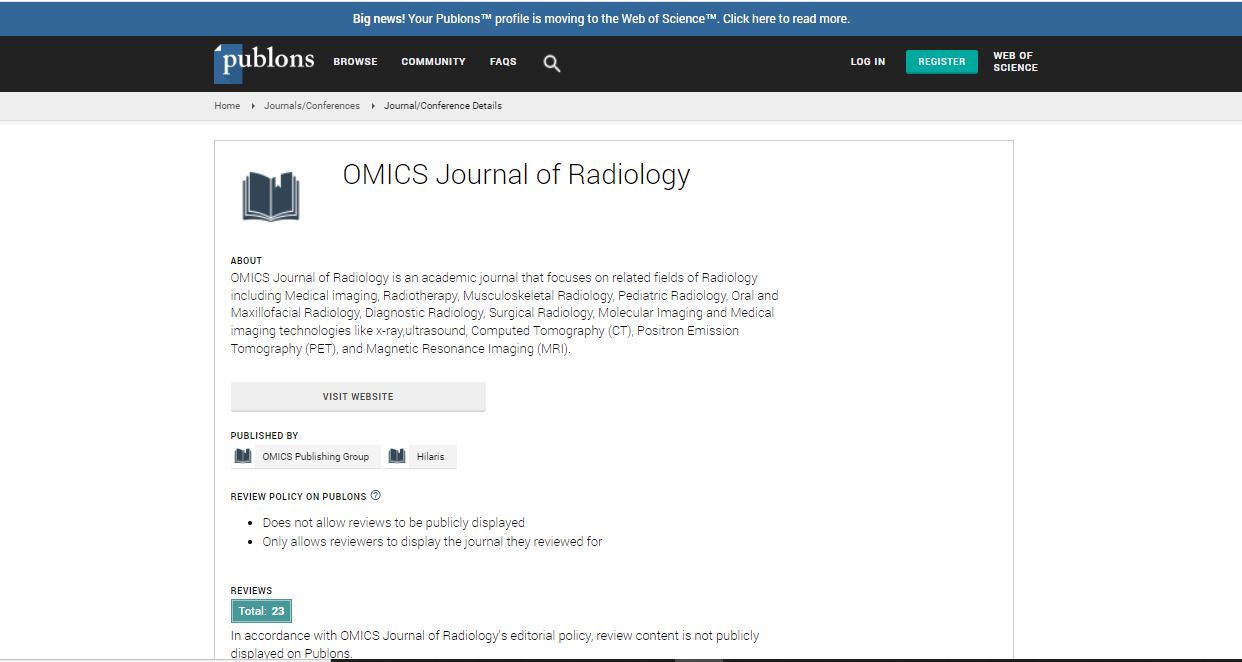Research Article
Fetal Magnetic Resonance Imaging for the Prenatal Assessment of the Extended Cardiovascular System by CASSEAL (Cardiovascular System Sonographic Evaluation Algorithm)
| Coral Bravo1,2, Yolanda Ruiz3, Luis Ortiz1, Teresa Álvarez4, Francisco Gámez1, Carlos Marín3, Ricardo Pérez1, Ángel Lancharro3 and Juan De León-Luis1* | |
| 1Department of Obstetrics and Gynecology. Hospital General Gregorio Marañón, Universidad Complutense de Madrid, Madrid, Spain | |
| 2Department of Obstetrics and Gynecology. Hospital Central de la Defensa Gómez Ulla. Universidad de Alcalá de Henares. Madrid, Spain | |
| 3Department of Radiology. Hospital General Gregorio Marañón, Universidad Complutense de Madrid, Madrid, Spain | |
| 4Department of Paediatric Cardiology. Hospital General Gregorio Marañón, Universidad Complutense de Madrid, Madrid, Spain | |
| Corresponding Author : | Juan De León-Luis Fetal Medicine Unit, Department of Obstetrics and Gynecology Hospital General Gregorio Marañón Universidad Complutense de Madrid O’Donnell, 48. 28009 Madrid, Spain Tel: + 34 (91) 5290218 E-mail: jdeleonluis@yahoo.es |
| Received: September 21, 2015 Accepted: November 09, 2015 Published: November 12, 2015 | |
| Citation:Bravo C, Ruiz Y, Ortiz L, Álvarez T, Gámez F, et al. (2015) Fetal Magnetic Resonance Imaging for the Prenatal Assessment of the Extended Cardiovascular System by CASSEAL (Cardiovascular System Sonographic Evaluation Algorithm) . OMICS J Radiol 4:209. doi:10.4172/2167-7964.1000209 | |
| Copyright: © 2015 Bravo C, et al. This is an open-access article distributed under the terms of the Creative Commons Attribution License, which permits unrestricted use, distribution, and reproduction in any medium, provided the original author and source are credited. | |
Abstract
Purpose: To compare axial view images obtained with fetal ultrasound (US) and magnetic resonance imaging (MRI) when applying the Cardiovascular System Sonographic Evaluation Algorithm (CASSEAL).
Materials and method: CASSEAL is an US algorithm consisting on the acquisition of 9 different axial views of the fetal abdomen and chest, from the umbilical vein to the subclavian arteries. It was designed for a thorough US assessment of the extended fetal cardiovascular system. Feasibility and reproducibility of CASSEAL have already been proven; however, its application in fetal MRI has yet to be established. A fetal MRI was performed to a 25 week-old fetus with ventriculomegaly (11 mm) in order to obtain the 9 axial views required by CASSEAL. Subsequently, a comparison between both imaging techniques was performed for each view.
Results: The comparison of the images obtained with these two imaging techniques showed a good correlation in the identification of cardiovascular anatomical structures.
Conclusion: CASSEAL US axial views can be obtained in fetal MRI and correlation between the 2 techniques is good. This finding suggests that MRI may be a useful complement to US in the assessment of fetal cardiovascular anomalies using the same views by which sonographers assess fetal cardiovascular structures.

 Spanish
Spanish  Chinese
Chinese  Russian
Russian  German
German  French
French  Japanese
Japanese  Portuguese
Portuguese  Hindi
Hindi 
